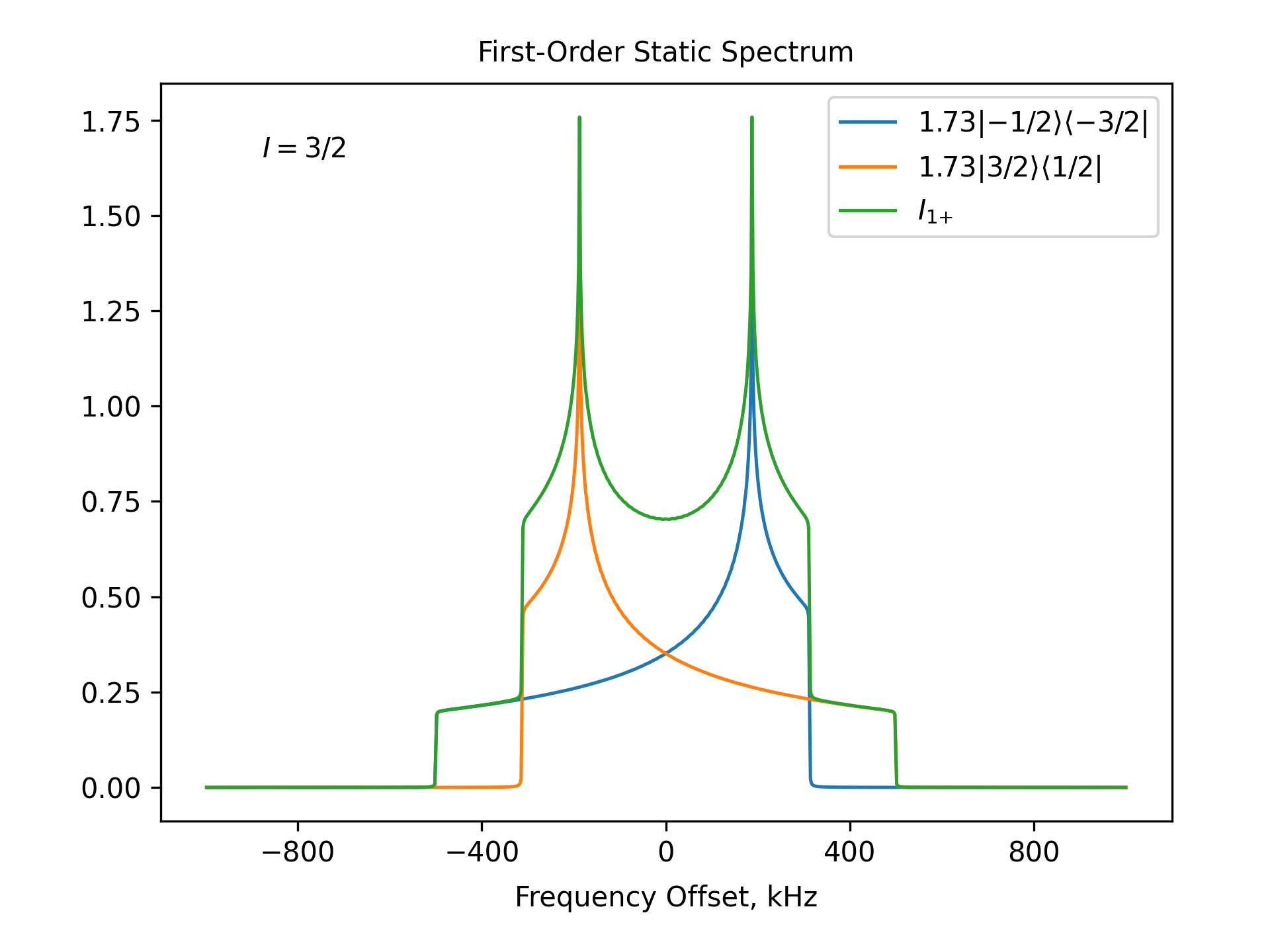First-order Quadrupolar Static Lineshape

quad1_stat
****** The System **************************************** spectrometer(MHz) 500 spinning_freq(kHz) * channels X(200 3/2) nuclei X atomic_coords * cs_isotropic * csa_parameters * j_coupling * quadrupole 1 1000 0.25 0 0 0 dip_switchboard * csa_switchboard * exchange_nuclei * bond_len_nuclei * bond_ang_nuclei * tors_ang_nuclei * groups_nuclei * ******* Pulse Sequence ************************************ CHN 1 timing(usec) (0.5)1024 power(kHz) 0 phase(deg) 0 freq_offs(kHz) 0 ****** Variables ****************************************** fig_title="First-Order Static Spectrum" fig_options="--text 0.1,0.9,$I=3/2$" ******* Options ******************************************* rho0 I1x observables 1.73|-1/2><-3/2| 1.73|3/2><1/2| I1p EulerAngles asgind100o n_gamma * line_broaden(Hz) * zerofill * FFT_dimensions 1 options -re -quad1 -rsp -py *********************************************************** -- This computes the spectra produced by each of the two observable transitions individually (the first two observables), as well as the total spectum obtained by observing I1p. -- Note that I1p=1.73205(|-1/2><-3/2|+|3/2><1/2|) + 2.0|1/2><-1/2| This can be observed, for example by running this input file with options -s -sm, or by running the quad_norm example -- The -rsp (remove singular peaks) option removes coherences with orientation-indepenent frequencies from the spectra. Since the second-order-broadening is not present in the Hamiltonian (due to the -quad1 option), the central transition is removed from the I1p spectrum. -- See quad2_stat for the second-order effects
